Comments and photos provided by the Refugee Center in upstate New York…
The Heart of a Community

Albany, New York is both the center of the capital region and home to a number of diverse communities. Organizations like the West Hill Refugee Welcome Center (RWC) work tirelessly to create opportunities for its members, as well as an accepting atmosphere for those who are looking for a collaborative space to make lasting connections.
Building Lasting Connections
The RWC works toward building a sustainable community that is supportive of its more established members as it is welcoming of newcomers. The center is known for its efforts in helping refugees polish their skills and tools they need to thrive as newcomers in the United States. They achieve this by organizing youth activities such as movie nights; mentorship programs; as well as safe and affordable housing. They also offer English and civics classes, and space to grow their gardens.
Local Partnerships
This summer, the RWC partnered with two local professors, Dr. Vera Eccarius-Kelly and Dr. Alison Schaeffing, with the purpose of creating a community museum with refugees living in the underserved West Hill neighborhood. A group of 12 Americorp fellows, students, many of whom are refugees themselves, were also involved in the program, which was facilitated by the Siena Project Incubator (SPIn), hosted by Siena College.
Unforeseen Obstacles
The supervisors and their fellows had originally hoped to engage with the RWC by developing a museum exhibit that showcased the voices of refugees. However, the spread of the coronavirus created several obstacles for the group.
They instead started a virtual fashion series, titled “For Us By Us.” The series features West Hill community members who showcase thee refugee community through fashion.
For Us, By Us: A Fashion Series
The “For Us By Us” project highlights more than just beautiful clothing. Descriptions of the outfits written by the models tells you more about the history of the garment and its use.
The project strives to provide a space for refugees to share their experiences, stories, and needs with the wider Albany community. The SPIn fellows hope that the future will allow them to use the images and their descriptions from the series as a feature in a new museum exhibit that will eventually be created through this initiative.
Meet the Models
Jeanne Sinzinkayo is not only a curator of the “For Us, By Us” Series, she is also a model for the fashion show. Along with another member of the AmeriCorps team, she is researching the Banyamulenge struggle for recognition, with the long term goal of publication of digital information for a virtual museum exhibit. With both projects, she hopes to serve as a record keeper for the unheard voices and experiences of the diverse communities, along with developing a comprehensive case study to publish.
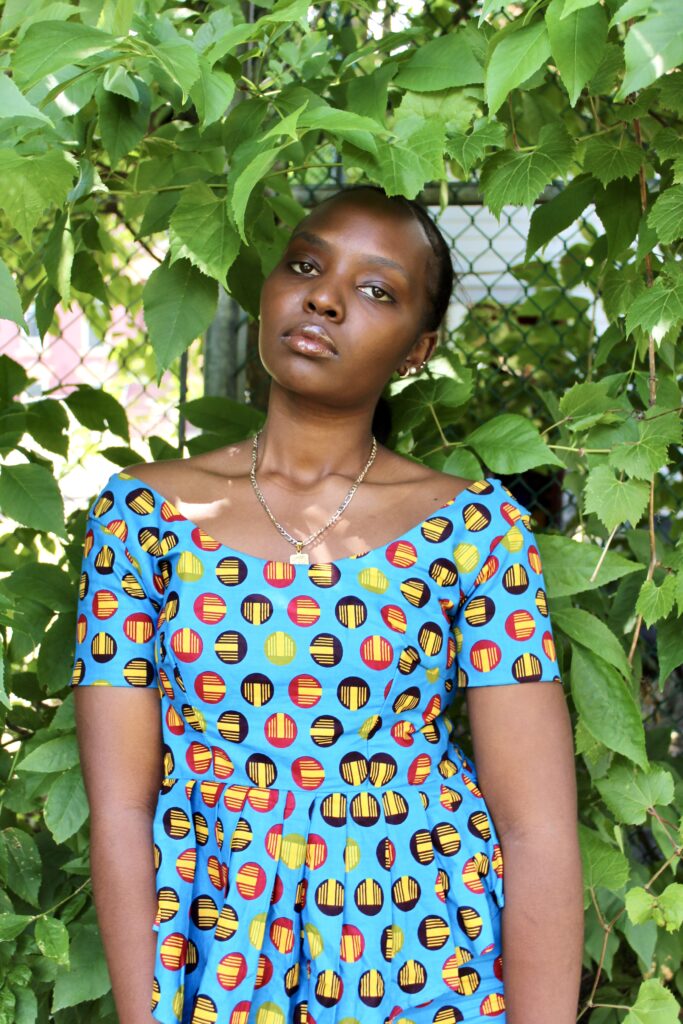
Jeanne Sinzinkayo: This blue outfit is a two-piece set in African clothing. The top is called iribaya (shirt) and the bottom part is called ipantaro. This is the most common for everyone of all ages. Usually, younger women would wear this as is or pair the iribaya (shirt) with a skirt (ijipo). Older married women would wear the iribaya (shirt) with another piece of igitange as their skirt. It is handmade and it is very versatile. It can be used interchangeably. For example, the top could be worn with jeans, and the pants could be worn with t-shirts. To save money and time, there are extra stitches so if one gains weight, one can take out some of the stitches to make the clothes lose to fit. The cloth itself is high-quality so it can sustain longer.
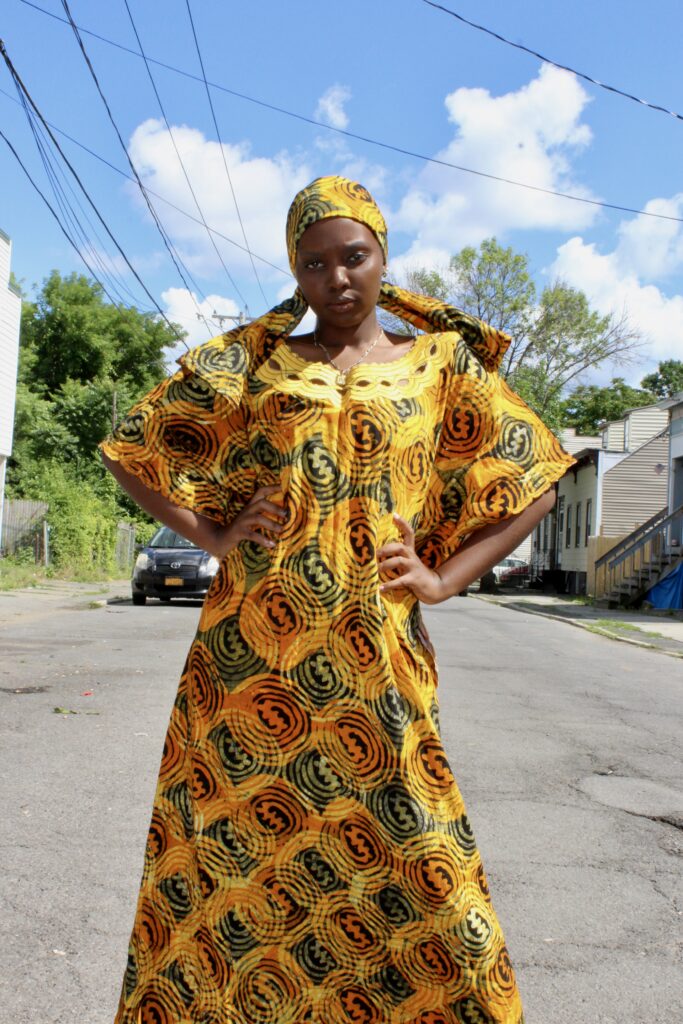
This yellow dress is called ibubu. This is commonly worn by older women in the Banyamulenge community of Congo. It is loose and it gives you room to be able to move around. It is typically worn with a headpiece because older women from the Banyamulenge community cover their heads as a sign of respect. When it is worn by younger women, they usually wear it without the headpiece.
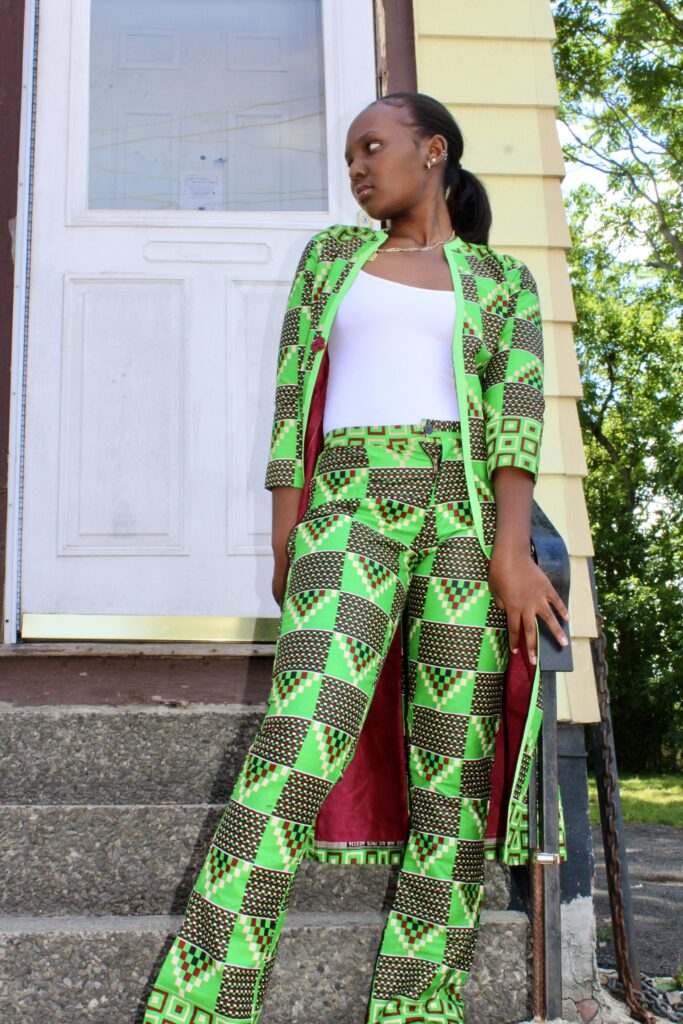
This green outfit is made out of a fabric called igitange. It is a set with pants and a long blazer, the blazer is called ikoti (jacket) and the pants are called ipantaro (pants). This is usually worn by younger women and it can be made for men as well. After selecting the fabric you can take it to the tailor with a design and they will make the outfit for you.
Balqees Sayed is also a SPIns Fellow, a model, and a local resident of the West Hill community. She is a recent graduate of Russell Sage College. She has been volunteering at the RWC for the past two years. Balqees is working as a part-time Program Coordinator at the RWC after graduation.
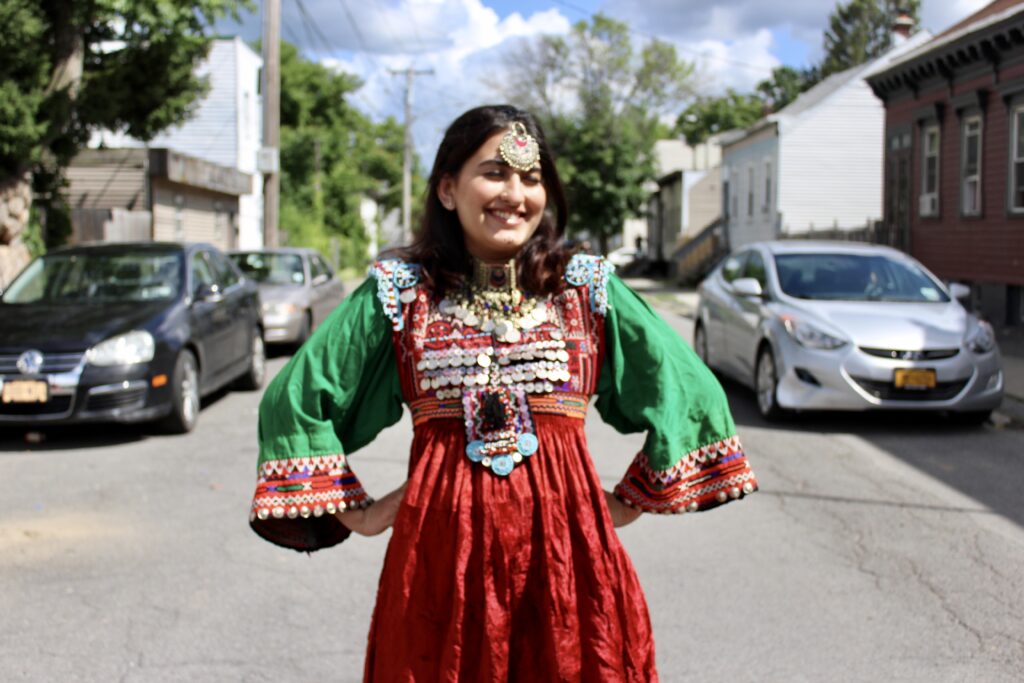
Balqees Sayed: I love wearing my Afghani Kamees (ethnic Pashtun dress). For me, this is an opportunity to show another part of who I am. I am not just a girl from a developing country. I am not oppressed. I am not controlled by men. This is a vintage dress worn by Kuchi women (Pashtun nomads). My ancestors were nomads. Traveling to colder areas in summer and warmer areas in winter. These dresses are perfect for colder weather in summer. It is very loose and has a huge pocket where you can store many things. And this is all handmade!
When I bought it, my mom sewed some torn parts of the dress. This is more than just a dress. This is a part of who I am. This is the beauty of my culture. This is what the media fails to see. We are humans. We have cultures. We have insights. We are smart. This is an Afghani kamees, to all the white people out there appropriating our culture. This is not a “boho” dress. This is a handmade Kochani kamees (nomadic dress).

The second dress was designed by me and my mother. Then it was sewn by my aunt. In Afghanistan, people who know how to make clothes, sew their own clothes. It is a very traditional way of wearing clothes. This dress was made from scratch, except the chest part which I bought from a vintage shop. This dress is usually worn in parties and different formal and informal occasions.

Ishaque Ismail: Men’s fashion is a way to express yourself. People can tell a lot about you just by looking at your outfit. This is a traditional Afghan male dress. It is called shalwar kameez. I wear it on Eid and to weddings.
Muzzamil Khiljee continually strives to spread love and acceptance throughout all of his lyrics. He has persistently fought for his work and message throughout his changing environments. Sip has continued to drop high-quality music with top-notch production to attract a mainstream crowd, all the while fostering the same message that culture is not necessarily just black and white. Music is unity; music is the culture that brings everyone together.
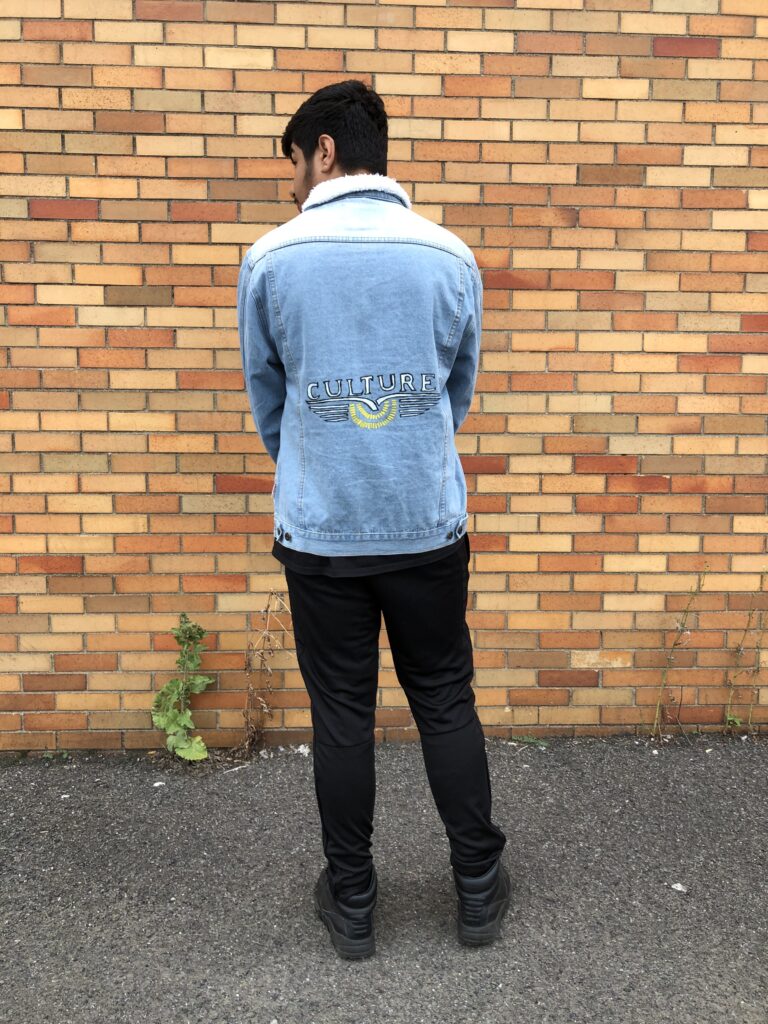
Muzzamil Khiljee: As a Hip-Hop fan, this handmade “culture” logo that you see on the back of my jacket is an international brand by one of the most talented Afghan hip hop/rap recording artists called Sip.
Continue Spreading Awareness
Looking for ways to become a part of the cause? Consider donating to the West Hill Refugee Welcome Center today, or, if you are a local of the Capital Region in Albany, consider volunteering at the Center and make a difference in a fellow community member’s life.

